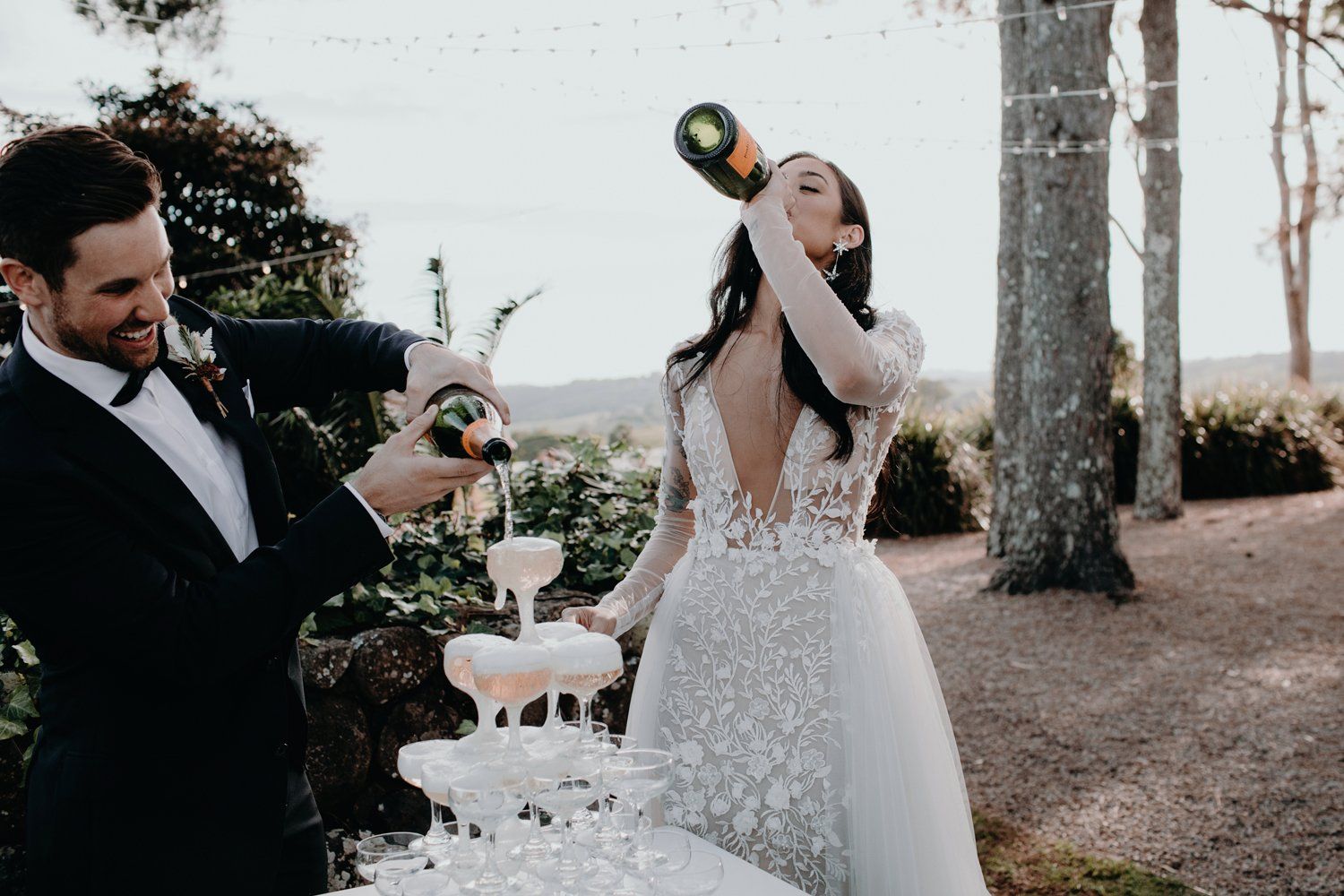Cover artwork is called ‘Wurinyan’, meaning ‘coming together in love’ by Daisy Hill – a young Muruwari Artist.
What is an ‘Acknowledgment of Country’? And should I have one at my wedding?
They’re important questions to ask, particularly in 2020 and beyond as the spotlight has been shone on racial disparities that exist within our society.
So many of us choose to get married at beautiful venues that make the most of the natural surrounds. Yes, we’re bloody blessed here in Australia. And with this privilege also comes the oft-forgotten fact that the country that we’re wedding on has traditional Indigenous Australian custodians.
A practice that we believe is absolutely worth considering for your wedding ceremony is to recognise these traditional custodians of the land on which your special day is taking place by incorporating an ‘Acknowledgment of Country into your wedding ceremony. It’s a way of showing respect for Aboriginal culture and heritage, as well as assisting to raise awareness of these two things within your immediate community.
So, how do you go about this? And at what point should you make this acknowledgment? We’re here to provide all the direction you’ll need.
Firstly, what’s the difference between a ‘Welcome to Country’ and an ‘Acknowledgement of Country’?
It’s important to get this distinction right.
As defined by Reconciliation Australia, “A ‘Welcome to Country‘ is a ceremony performed by Aboriginal or Torres Strait Islander Elders, or Traditional Owners who have been given permission, to welcome visitors onto their traditional land”. In other words, it’s a ceremony that can only be performed by custodians of that land on which the ceremony is taking place.
An ‘Acknowledgment of Country‘ however, can be performed by any person – Indigenous or non-indigenous – as a mark of respect. It’s symbolic of recognising the ongoing connection of Aboriginal people as the custodians of their land and it promotes an awareness of the past and ongoing connection to place and land of Aboriginal Australians.
When should an Acknowledgement of Country happen at a wedding? And who should do it?
Typically at weddings, this is done by your celebrant at the beginning of your wedding ceremony. It’s recommended that your celebrant do the acknowledgment in the first person or on behalf of themselves and you guys as the couple, e.g “I would like to acknowledge…”/”We would like to acknowledge”/”[Insert couple’s names] and I would like to acknowledge…”.
How should an Acknowledgement of Country be worded for my wedding ceremony?
Talk to your celebrant about your wish to include an Acknowledgement of Country – they may have made one before and have some suggested wording. Here are some template Acknowledgements of Country that your celebrant could use that we’ve adapted from creativespirits.info.
- “[Insert couple’s names] and I would like to begin by acknowledging the Traditional Owners of the land on which we meet today. We would also like to pay our respects to Elders past and present.
- I would like to acknowledge the ___________ people, who are the traditional custodians of this land. I would also like to pay my respects to Elders past and present, and I extend that respect to other Indigenous people who are present.
- I would like to acknowledge that we meet on Aboriginal land, the land of the __________ people. I would like to pay respect to their Elders, past and present.
- I would like to acknowledge the traditional custodians of the land on which we meet today and pay my respects to the Elders past and present.
How can I find out who the traditional custodians are of the land on which my wedding will take place?
You can use the AIATSIS map of Indigenous Australia to determine the custodians of your wedding ceremony site. We would also recommend consulting with the local tourism board and/or council to confirm this information, as AIATSIS acknowledges that the map’s boundaries may not be exact and may be contested by some traditional owners.
Why is acknowledging country important?
Aboriginal and Torres Strait Islanders continue to experience exclusion, discrimination and oppression. Acknowledging Country is a good step towards reconciliation between the colony of Australia (non-Indigenous people) and Aboriginal and Torres Strait Islander people.
According to the Foundation of Young Australians, “by researching and writing an Acknowledgment as a non-Indigenous Australian, you’re teaching yourself more about the true history of the country you are on. By actively giving an acknowledgment you’re acknowledging that the land always will be that of the Traditional Custodians. You are acknowledging that invasion and colonisation has occurred, and that in spite of that, Aboriginal and Torres Strait Islander people continue to survive and thrive”.
We see integrating an acknowledgement into a wedding ceremony as a simple, respectful step to raise awareness for Indigenous culture and normalising it’s place in modern Australian society. The more we do this in our everyday lives, the more successful we’ll be in achieving harmony and equality in the future.
Where can I find more information about acknowledging country and learn more?
There are several sources we relied on while writing this article and we’ll link to them below:
+++++++
Looking for more ideas?
We’ve brought together advice, articles, and inspiration on our Advice & Ideas blog to help you find your feet.








